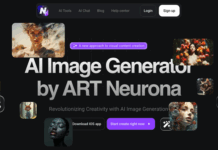Running a small business, especially from home, comes with a unique set of challenges. With limited time and resources, you’re often juggling multiple roles—handling everything from marketing to customer service, often all by yourself.
Operating at a fast pace means there’s little room for deep strategic planning, like carefully defining your target audience or crafting the perfect marketing campaign. Tight budgets make it hard to hire extra help, and time is so precious that spending it on recruiting and training new talent seems impossible.
So, it’s no wonder that more small businesses are turning to AI tools to help scale their efforts. These tools are easy to use, with a small learning curve, and they’re affordable. Many small businesses are already using at least one AI tool, and those that aren’t will likely need to soon just to stay competitive.
But here’s the thing—just as your business offers a specific solution to your customers’ problems, AI platforms should do the same for you. Popular tools like ChatGPT, Claude, and Gemini are designed to handle a wide range of tasks fairly well because they’re trained on massive datasets. However, when it comes to something as nuanced as marketing—where you need to really connect with your audience—these tools might not always hit the mark. While they’re useful, you shouldn’t be afraid to try out different options to see what best meets your specific needs.
Why Being “Disloyal” to One AI Platform Makes Sense
It’s tempting to stick with one AI tool, especially when time and energy are in short supply. The thought of evaluating multiple options can feel overwhelming, particularly if you don’t have a dedicated IT team to help with integration and setup. But here’s the good news: even if you decide to use several AI tools, it usually costs far less than hiring even one full-time employee.
Not all AI platforms are created equal. Some are great for automating routine tasks, while others excel at digging deep into data to generate insights. If you rely solely on one platform, you might find it doesn’t fully meet all your needs.
By using multiple AI platforms, you can see which tools work best for the different aspects of your business. This approach lets you choose the most efficient tool for each task and prevents you from becoming too dependent on a single platform. If one tool no longer suits your needs, you’ll have other options ready to go. Plus, with the rapid pace of AI development, staying flexible means you’re always ready to take advantage of the latest advancements.
Practical Steps for Adopting Multiple AI Tools
For small business owners, especially those running home-based businesses, it’s important to carefully choose the right AI tools. Start by identifying where AI could make the biggest impact in your business, whether that’s in content creation, customer engagement, or analyzing data. Begin with small tasks so you can test out how well a tool works without causing major disruptions.
Keep an eye on how much value each tool is delivering. If something isn’t working as well as you hoped, don’t hesitate to drop it and try something new. Staying current with AI advancements is key, and so is making sure you and your team (if you have one) know how to use these tools effectively. Consider signing up for newsletters or joining online communities to keep up with the latest trends and updates in AI.
The Bottom Line
AI has incredible potential to transform small business operations, especially in marketing. But relying on just one platform might limit what you can achieve. By adopting a multi-tool approach, small businesses can stay agile, efficient, and ready to adapt to the rapid changes in AI technology. In a world where staying competitive often means being adaptable, embracing the opportunity to experiment with and diversify your AI tools can help you achieve the best results.
Find a Home-Based Business to Start-Up >>> Hundreds of Business Listings.

















































